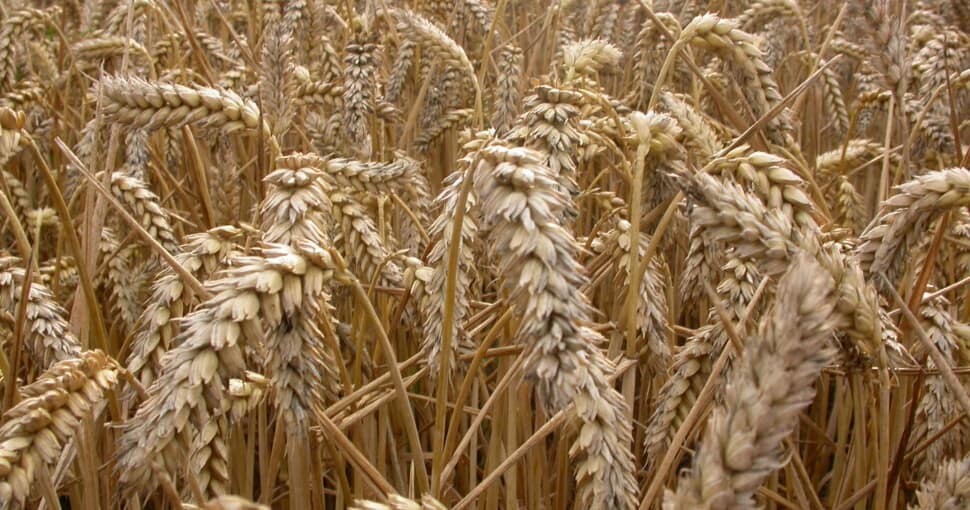Wheat (Triticum aestivum) is an ancient grain known to all. Wheat is used worldwide to make bread, pasta, baked goods, alcohol, and other products. Wheat is a staple grain worldwide, and many people rely on this grain for survival.
Contents
- 1. Hare Barley (Hordeum murinum spp. Leporinum)
- 2. Wild Oats (Avena fatua)
- 3. Foxtail (Setaria faberi)
- 4. Rye Grass (Festuca perennis)
- 5. Barnyard Grass (Echinochloa colona)
- 6. Dallis Grass (Paspalum dilatatum)
- 7. Darnel Grass (Lolium temulentum)
- 8. Amaranth (Amaranthus)
- 9. Western Wheatgrass (Pascopyrum smithii)
Wheat is a part of the family of cereal grasses. Wheat is a green grassy plant that grows about 3 feet tall. The stems are usually hollow inside, and each stem develops a head known as an ear. These ears contain the seeds used to make all the food products.
When given enough time, the ears also develop into flowers, known as inflorescence. While wheat is a reasonably common grain, plenty of other grains resemble wheat in color, size, and ear shape. Some plants that look like wheat are:
- Hare barley – flower heads resemble wheat
- Wild oats – very similar to wheat grain, except for the darker color and harrier leaf
- Foxtail grass – larger flowerheads that resemble wheat
- Ryegrass – same height and flower heads as wheat
- Barnyard grass – broad leaves and flower heads like wheat
- Dallis grass – the plant looks like wheat, but the flowerheads differ
- Darnel grass – identical to wheat before the ears grow
- Amaranth – resembles the flower heads of wheat
- Western wheatgrass – stalks, and seeds resemble wheat
Although most of these plants are considered weeds, each resembles wheat in a unique way. Are you interested to know more about the different plants that look like wheat?
1. Hare Barley (Hordeum murinum spp. Leporinum)
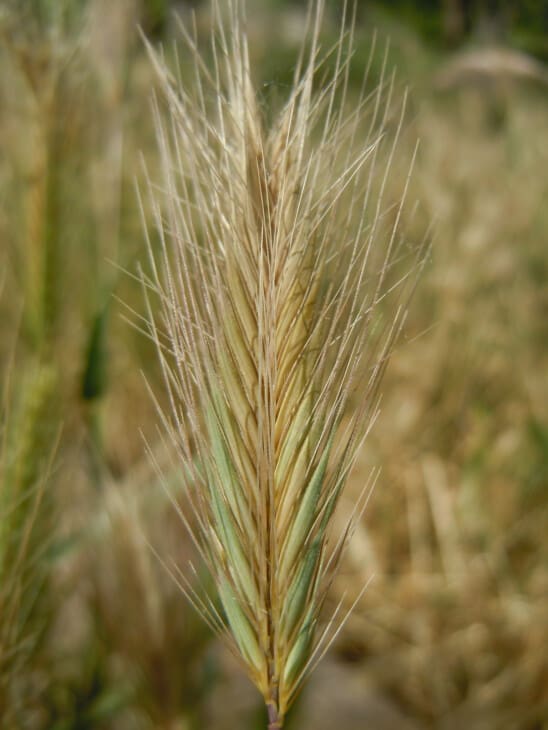
The first grass that resembles wheat is known as hare barley. Hare barley originates in Europe and Northern Africa. Although hare barley is an inedible weed grass, it resembles wheat. Hare barely has the same broad leaves and straight stems that wheat does.
The flower heads are also a striking resemblance to wheat. Hare barley also grows about the same size as a wheat plant, reaching between 3 and 4 feet high.
The primary way to distinguish between wheat and hare barley is to consider the spikes on the flowerhead. Hare grass has significantly more spiky pinnacles than wheat.
2. Wild Oats (Avena fatua)
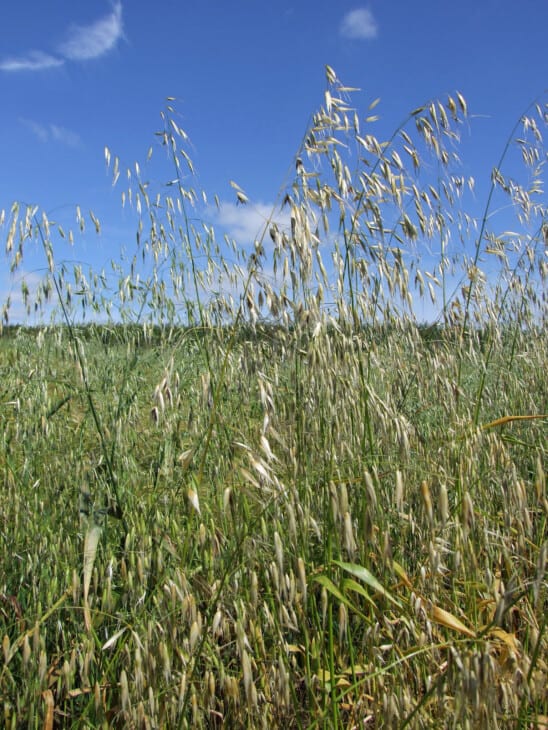
Wild oats often grow in wheat fields, and these two grains look remarkably similar. Wild oats have the same straight stems and leaves as wheat. The flowerheads and ears also look similar to that of wheat. Wild oats also grow 3 to 4 feet high, making it difficult to spot this weed in the wheat fields.
But there are slight differences between wild oats and wheat. For one, wild oats have a slightly darker green color. While the flower heads are similar in size, the individual spikelets are bell-shaped. They have slightly bent projections that remind one of bristles.
Wild oats are also furrier at the base of their leaves (where the leaf meets the stem) than wheat. Wild oats are a common weed found in wheat fields, and are one of the biggest problems farmers face when planting wheat.
3. Foxtail (Setaria faberi)
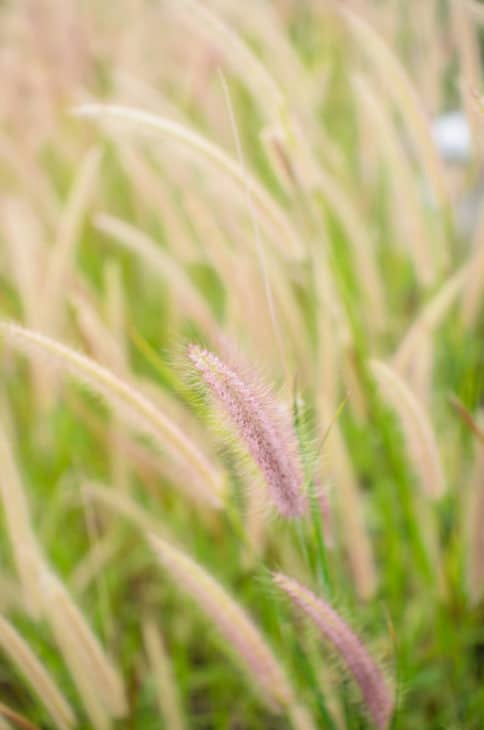
Foxtail, also known as giant foxtail and Japanese foxtail, is a common weed found throughout America. It grows about 5 feet tall, making it slightly taller than wheat. Foxtail also produces white flowers, whereas wheat has yellow ones.
But there are some similarities between wheat and foxtail too. The flower heads of foxtail look similar to wheat. The stems, leaves, and plant’s general form remind one of young wheat. Foxtail isn’t edible, though, and it is a troublesome weed that can take over an entire field if left unchecked.
4. Rye Grass (Festuca perennis)
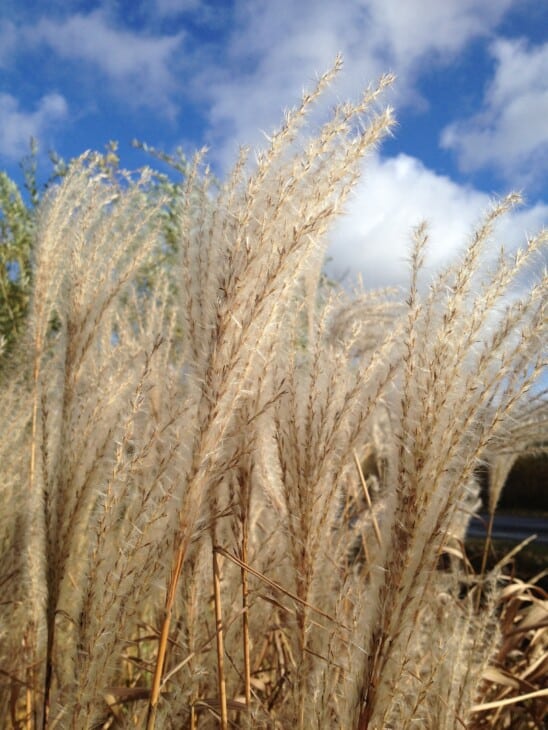
Ryegrass is a popular garden plant that can also occur in the wild or field crops and is then considered a weed. Ryegrass is the same shade of green as wheat, but the structure of rye is somewhat different. Ryegrass is a much skinnier plant, with individual stems carrying flowerheads.
Ryegrass doesn’t have the same broad leaves as wheat. Yet the flowerheads and spikes resemble that of wheat. Ryegrass isn’t edible and doesn’t produce edible seeds. Instead, it has more of an ornamental value to people when it is not growing in wheat fields or among other crops.
5. Barnyard Grass (Echinochloa colona)
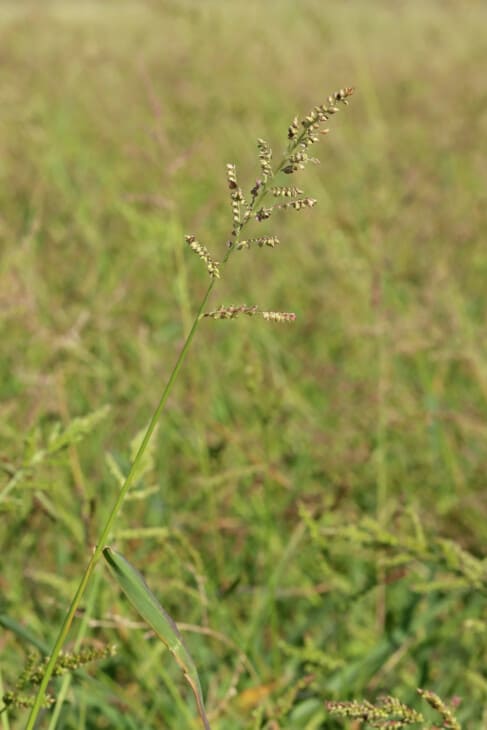
Barnyard grass is another common weed that can be mistaken for wheat. This weed is common in America and other parts of the globe, where it reduces the nutrients available to wheat in the fields. A barnyard grass plant looks similar to wheat, with the same straight stem and leaf structure.
Both plants grow about 3 feet tall, making them appear similar when you look across a wheat field. Barnyard grass also produces flowerheads and spikes like wheat.
The biggest visual difference between barnyard grass and wheat is that the flowerheads of barnyard grass are purple. Before the flowerheads appear, though, it is hard to tell the difference between these two plants without careful inspection.
6. Dallis Grass (Paspalum dilatatum)
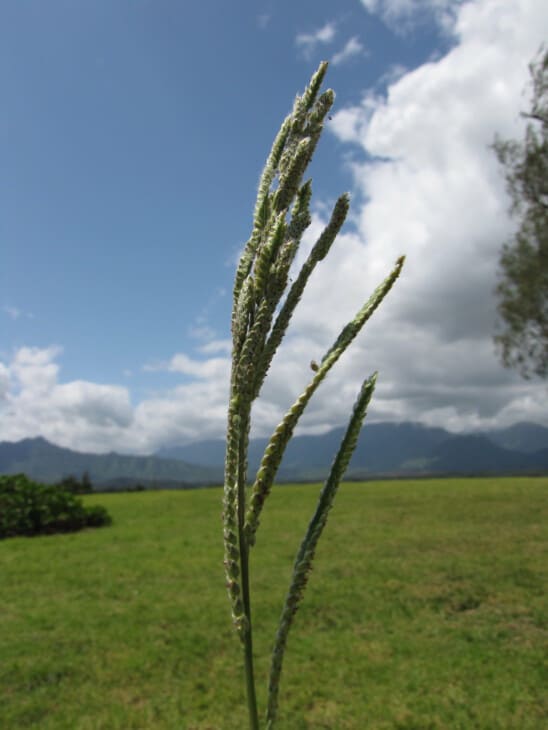
Dallis grass is a common weed throughout America. This weed originated in South America but has since spread all over. Dallis grass is relatively smaller than wheat, averaging about 12 inches in height. Yet the plant looks like a mini-wheat plant at first glance.
Dallis grass has the same flower head structure as wheat but can produce more than one flower head on a single stem. The flower heads are green with slight brown markings. Dallis grass isn’t edible, and weeds are mostly found on grass fields.
When inspecting dallis grass closely, you can quickly identify it since the thick blades are a dead giveaway. Still, dallis grass is one of the weed grasses with a similar shape and appearance as wheat.
7. Darnel Grass (Lolium temulentum)
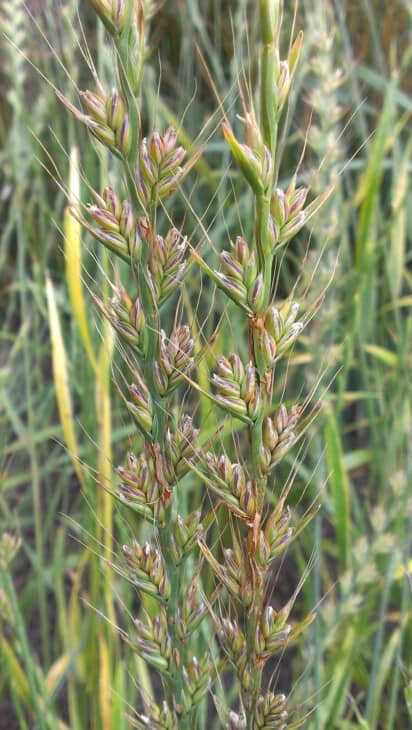
Darnell grass is known as wheat’s evil twin since this plant behaves precisely like wheat. Darnel grass also relies on humans for reproduction. Their seeds are often accidentally harvested, stored, and replanted along with wheat.
Darnel grass looks similar to wheat, with slight differences distinguishing the two. The flowerheads of darnel grass are more slender than those of wheat. The spikelets only have a single glume, whereas wheat spikelets have two glumes.
The biggest visual difference between wheat and darnel grass, however, is that wheat turns brown when it matures, while darnel grass turns black. The seeds of darnel grass are toxic, but people have taken it as a drug in smaller doses throughout history.
8. Amaranth (Amaranthus)
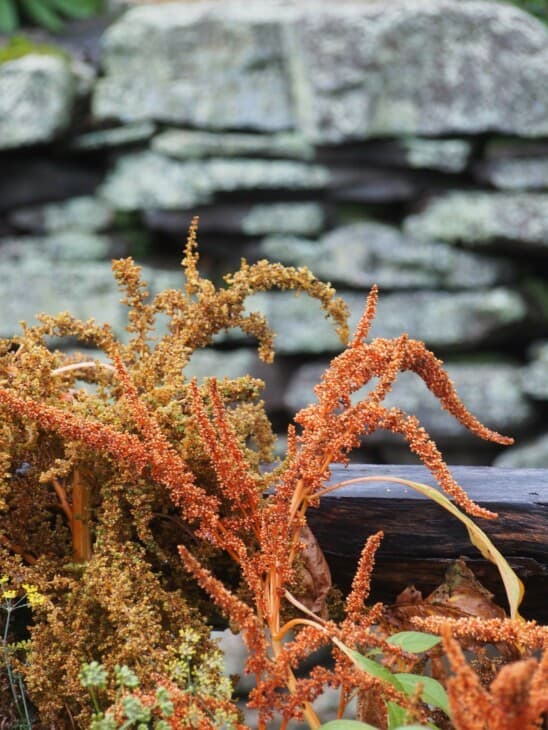
Amaranth is a herb with a striking resemblance to wheat. Amaranth leaves are a staple food in many countries, just like wheat. Amaranth seeds are also considered a grain and are edible like wheat. Amaranth flowers gather in huge, cone-shaped pinnacles resembling wheat flower heads.
This is the only visual similarity between amaranth and wheat. Amaranth flowers are a bright red color, and the leaves are broad and flat. You won’t mistake amaranth for wheat, but the flower bunches look like beautiful wheat ears. Amaranth is often used as an ornamental grass because of the striking flowers.
9. Western Wheatgrass (Pascopyrum smithii)
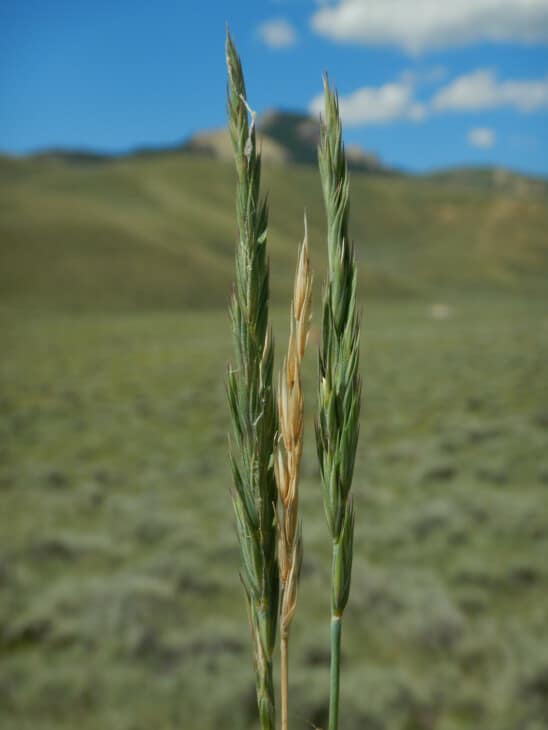
You may see western wheatgrass growing wild, but it is also a cultivated crop in many parts of the world. Western wheatgrass is often used as animal food and provides plenty of nutrients for livestock. Wheatgrass looks similar to wheat, which is why it has the same name.
Wheatgrass produces long, straight stems that grow about 2 feet tall (slightly shorter than wheat). It also produces flowerheads with spikelets, just like wheat. The seeds are similarly shaped to wheat, while the flowerheads look more like feather dusters than those of wheat.

